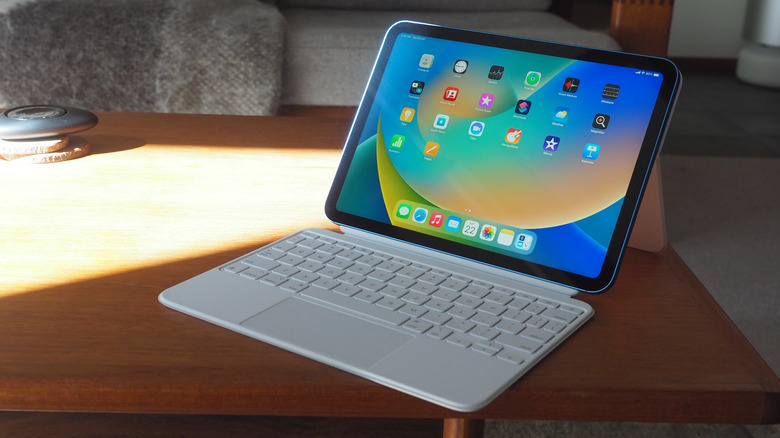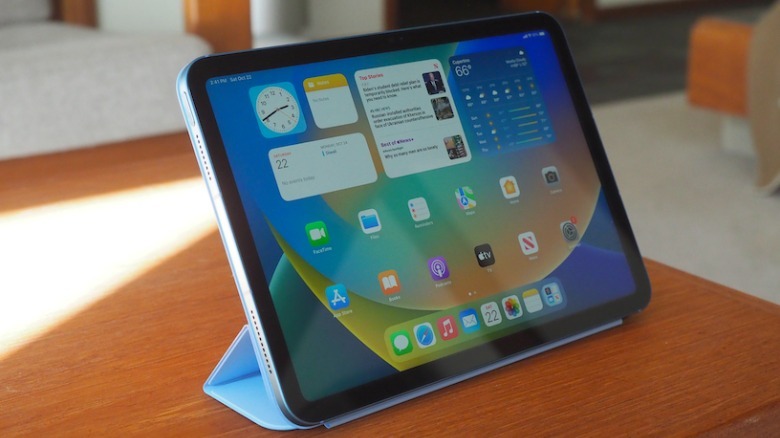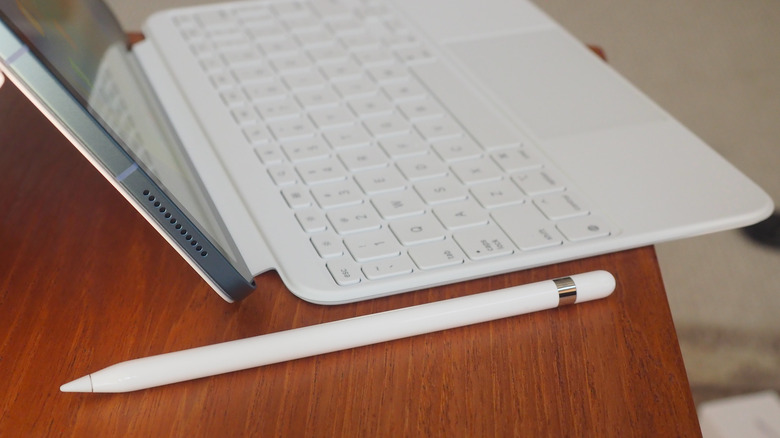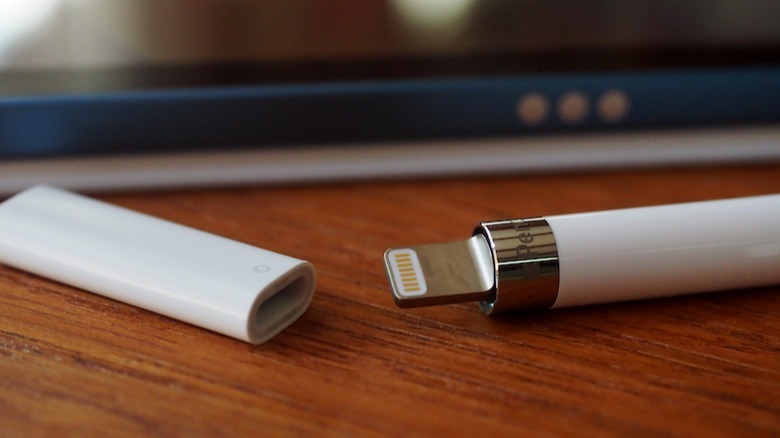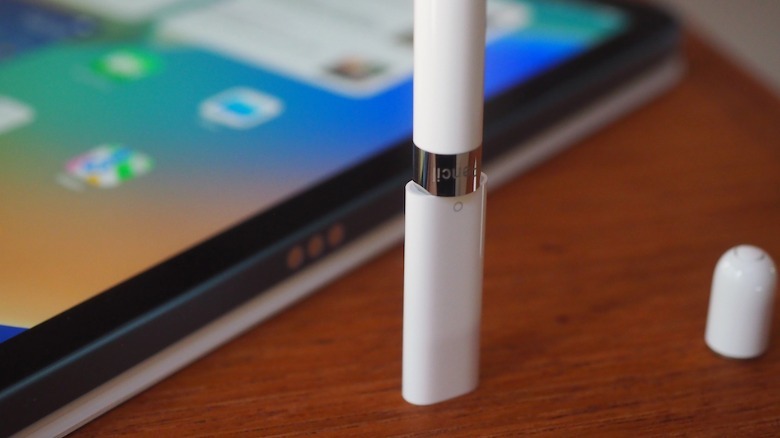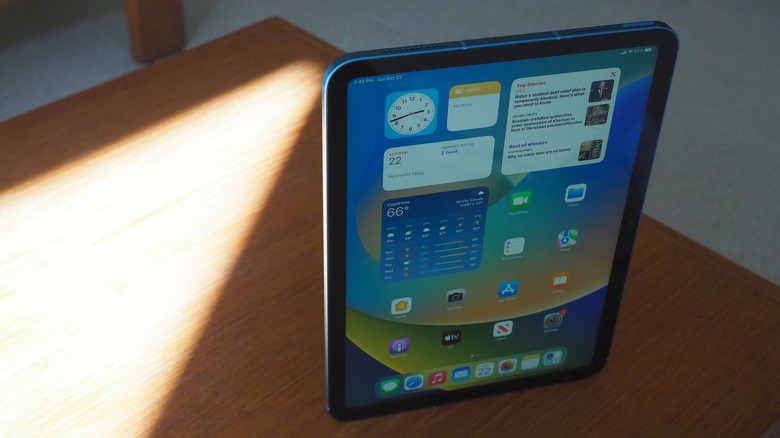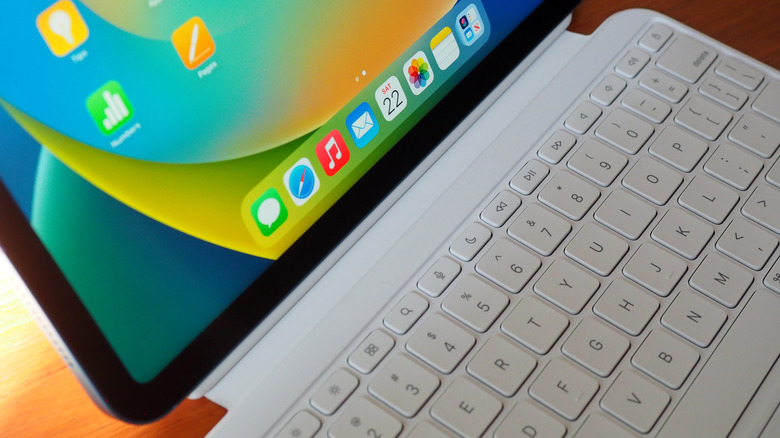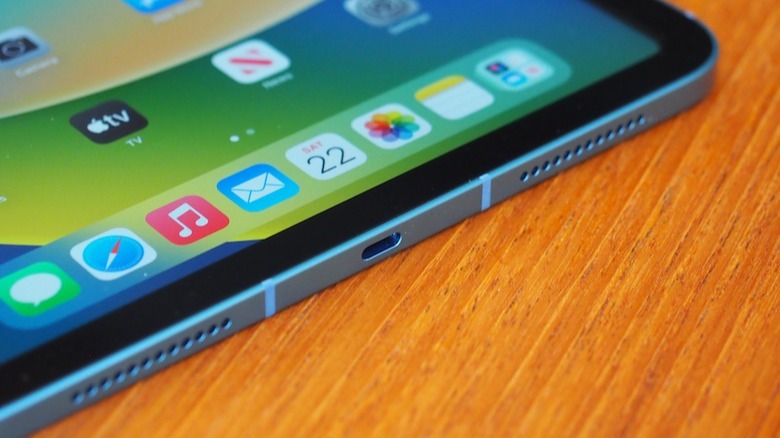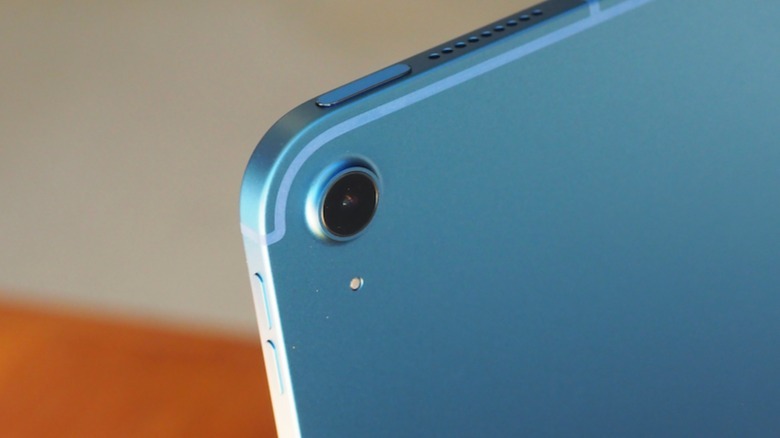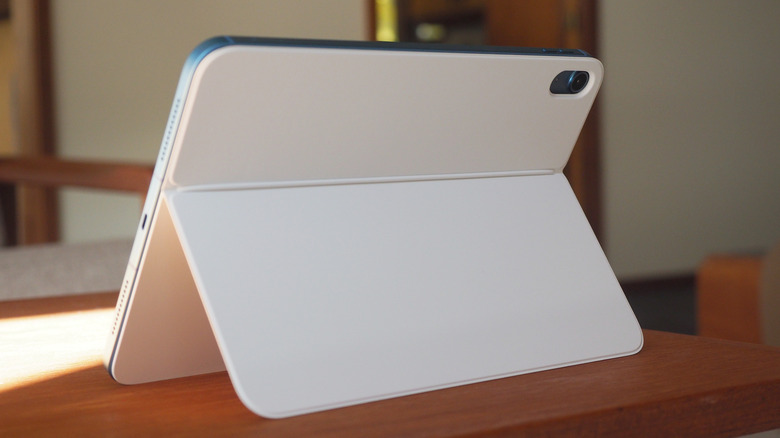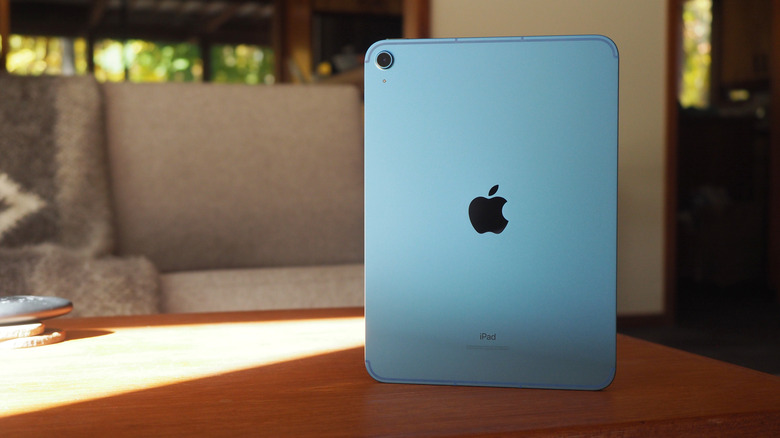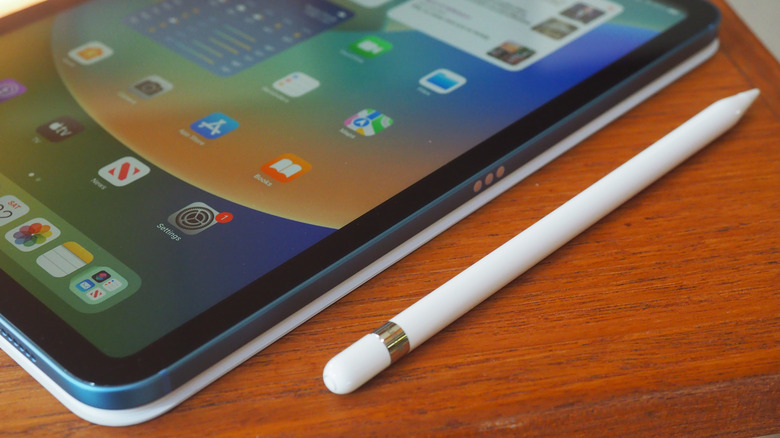Apple iPad 2022 Review: The New Minimum
- Bigger display finally says farewell to the home button
- Affordable performance
- Magic Keyboard Folio is great to type on
- 5G is welcome
- Gets expensive with accessories and options
- Apple Pencil charging means another dongle
Farewell, physical home button; you served us well, but with the arrival of Apple's 10th-generation iPad (2022), you receive your much-deserved retirement papers. Only, not quite, because Apple is keeping the 9th-generation iPad around as a value play. Still, if we're talking new-new hardware, the 10th-generation iPad catches up with its tablet and smartphone siblings by ditching the physical in favor of swipes.
It's a sensible decision, not least because it frees the iPad's display to stretch — like a luxuriating kitten — out closer to the edges of the slate. There are still bezels, of course, but since you need somewhere to grip the tablet, I'll not begrudge them. The 10.9-inch Liquid Retina panel is, on paper at least, much the same as that on the most recent iPad Air, though it's not identical.
That means a healthy 2360 x 1640 resolution, True Tone automatic color temperature adjustment, 500 nits of brightness — fine for indoor use, but less so when facing bright sunlight — and a fingerprint-proof coating. Apple leaves off the iPad Air's anti-reflective coating, however, which is a shame because that makes for a much nicer display day to day. The bigger loss, though, is P3 color gamut support. Side by side, the iPad Air's screen just looks nicer than that of the 2022 iPad. That's not to say the new, cheaper tablet is bad, but going back from the iPad Air experience may be tricky.
Apple Pencil now demands a charging dongle
There's support for the Apple Pencil — in this case, the first-generation version. Honestly, Apple's approach to styluses has been a little confusing, not least given that it has two versions on sale that are each supported by a different subset of iPads. The primary distinguishing factor — because hardware performance around things like pressure and tilt are actually the same — is how they charge, which leads us to the second head-scratcher.
Back when there was a Lightning port on the iPad, you plugged the first-gen Apple Pencil into that; it looked fairly ridiculous, but it only needed to be in there for a minute or so. While the 10th-generation iPad has switched to USB-C, though, the stylus hasn't. So, Apple has a USB-C to Lightning adapter, sitting between the Apple Pencil and your iPad charger.
It's $9, and Apple's argument is that there's a sizable cohort of people who already have an Apple Pencil and want the new iPad, but shouldn't have to buy a whole new stylus in the process. I can agree with that. The more annoying part is that, if you're out and about without a USB-C charger, you now can't top up the Apple Pencil.
iPadOS 16.1 makes iPad smarter
Sadly, the hover support that Apple added to the latest iPad Pro models isn't carried over here. That may not seem like much, but the ability to see what the effect of the stylus will be before you actually make contact with the display has an outsized impact on how usable it is. It shouldn't undermine the usefulness of apps like Freeform, though, which will be added to iPadOS 16 later in the year. Effectively a mind-mapping tool, it's an effectively infinite whiteboard that multiple people can collaborate on in real time. That includes handwriting, embedding images, videos, documents, links, and other content, and all with cross-platform support so that the same Freeform project can be accessed across Apple devices.
That's clever, but honestly, it's the smaller — but more intuitive — improvements and refinements that I'm enjoying. Things like the boosted search in Mail, and its ability to remind you if you wrote that you were going to attach a file but then try to send without one. Live Text, and its ability to extract text from both still images and paused video, has already demonstrated its worth on iPhone; now, it's arriving on iPad, too. The same goes for the ability to automagically clip objects from images and paste them — without all the messy background — into other images or documents. Of course, existing iPad owners are getting the iPadOS 16.1 update, too.
5G and a repositioned camera are welcome changes
Then there's Stage Manager, another attempt by Apple to give multitasking a makeover. The feature groups your apps and documents intelligently along the left edge, allowing windows to be summoned and resized so as to make working on a project more straightforward. I prefer the experience on the 12.9-inch iPad Pro, where the bigger display lends itself more adroitly to having more on-screen at any one time, but the 2022 iPad can drive up to a 4K 30Hz or 1080p 60Hz external monitor via its USB-C port.
It's not the only connectivity bump we've seen this year. The iPad Wi-Fi + Cellular model now supports 5G as well as LTE. There's both physical and eSIM support, and you still get simple on-tablet access to hundreds of global data plans when roaming. It's a feature I really wish Apple would add to iPhone, especially now that the iPhone 14 is eSIM-only.
The other big improvement is the repositioning of the camera. While the iPad may not get the Face ID-supporting TrueDepth camera of the iPad Pro, its 12-megapixel ultra-wide sensor has been moved from the top portrait edge to the top landscape edge. That's far more conveniently positioned for FaceTime or other video calls, and you get Center Stage, which uses digital zoom and crop to track your face and keep you centered in the frame.
Apple's Magic Keyboard Folio is good, but expensive
The Apple Pencil isn't the only accessory Apple hopes to sell you. As before, there's a Smart Folio cover that protects the front and back of the tablet and acts as a two-angle stand. However, 2022 brings the new Magic Keyboard Folio, and it's a two-part assembly. A protective panel magnetically clings to the rear of the tablet, with an adjustable kickstand folding out to hold the iPad up.
Then, a keyboard attaches to the Smart Connector on the bottom edge. It has hard keys with 1mm of travel and feels pretty much just like the keyboard offered with the iPad Pro. There's also a 14-key function row this time around, with shortcuts for things like screen brightness, search, volume, and media control. It'll fold up to protect the display when closed or all the way around the back — either as-is or flipped to keep the keys hidden — when you just want the tablet experience — or, since it's a separate part, you can tug it off altogether but still use the kick-stand. It's $249, while the Apple Pencil is $99.
iPad 2022 vs iPad Air 5
With the $449 price of the iPad itself — or $599 if you need 5G — you're looking at $797 for the tablet and both accessories. Apple is keeping the 9th-generation iPad around as a cheaper alternative, from $329, but it feels like the bigger question is where that leaves the iPad Air. The latter model starts at $599 (also for a 64GB configuration), or $749 for a cellular version. It uses the slightly more expensive $129 second-generation Apple Pencil, and either a $299 Magic Keyboard or a $179 Smart Keyboard Folio.
Then there's the chipset inside. The iPad Air gets the Apple M1, whereas the 2022 iPad uses the A14 Bionic that was launched in the iPhone 12. For those wanting to make ample use of Stage Manager or run the sort of prosumer apps that are now being built or ported for iPadOS, the M1's extra grunt will probably be worth the outlay. For mainstream users, home or student users, or those just wanting a highly portable internet, multimedia, email, and typing machine, though, I had no issues doing all of that on the new iPad.
iPad 2022 verdict
Microsoft's Surface Go 3 is the obvious competitor on that front, and boasts a cheaper starting price, though by the time you reach a less-frustrating hardware configuration — and add in the optional keyboard and pen — the Windows tablet's price is about on par with Apple's. Chrome OS, meanwhile, has some reasonable options, though we'll probably need to see what next year's Android-based Pixel Tablet offers to see Google's most direct alternative.
As a package, then, Apple's offer this year really does feel well suited to its target audience. I suspect a lot of people who might consider an M1 MacBook Air would be just as much at home doing the same tasks on the new iPad with the Magic Keyboard Folio. I wish the latter was $50 to $100 less expensive, but it's still a pairing that starts at $698 — or $848 with the useful integrated 5G that Apple continues to withhold from its laptop range.
The same sort of setup with the old iPad felt a little more cramped, and the typing experience was less refined with its more basic keyboard cover. With proper keys this time around, and pushing the screen out to better fill the available space, the 2022 iPad feels less like a budget compromise. As a result, while you could go cheaper, you probably shouldn't.
